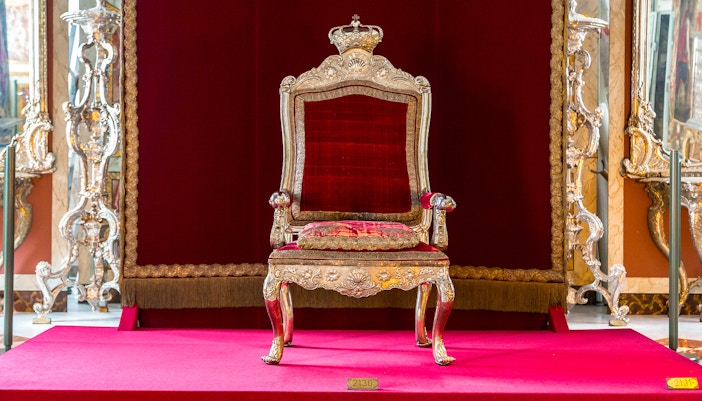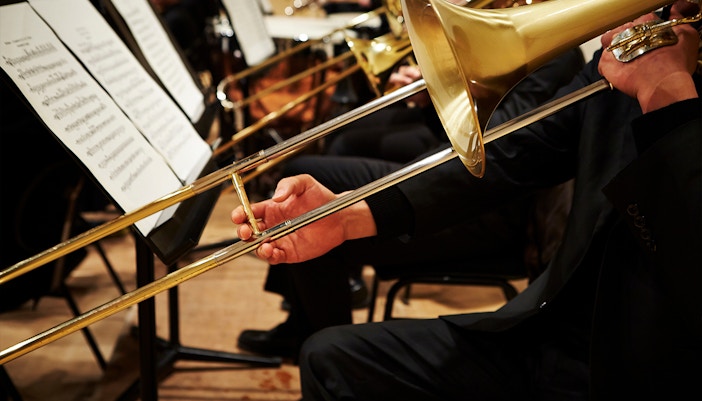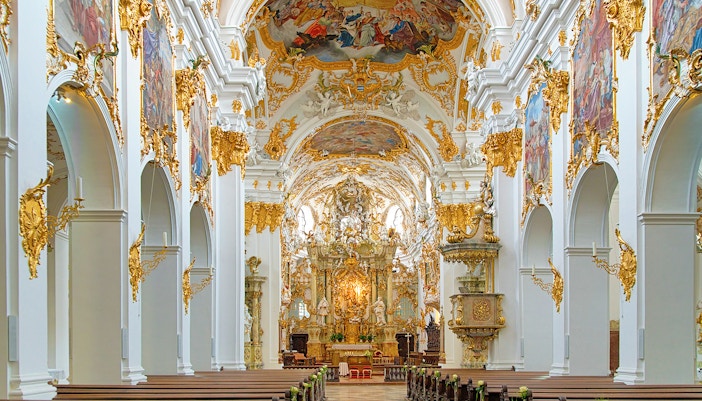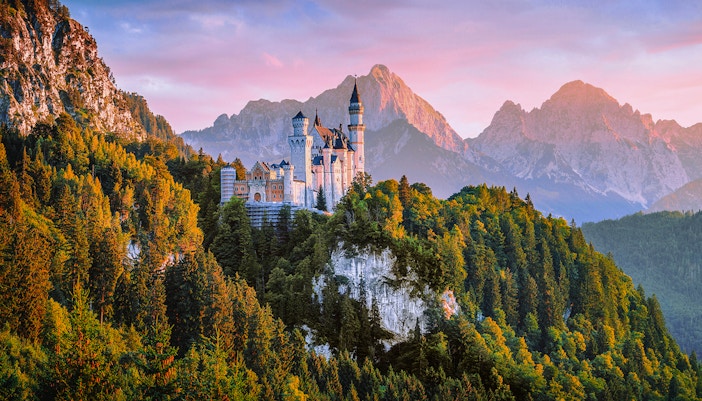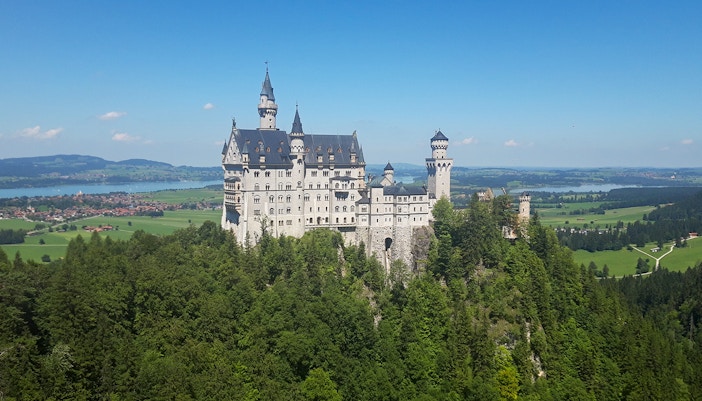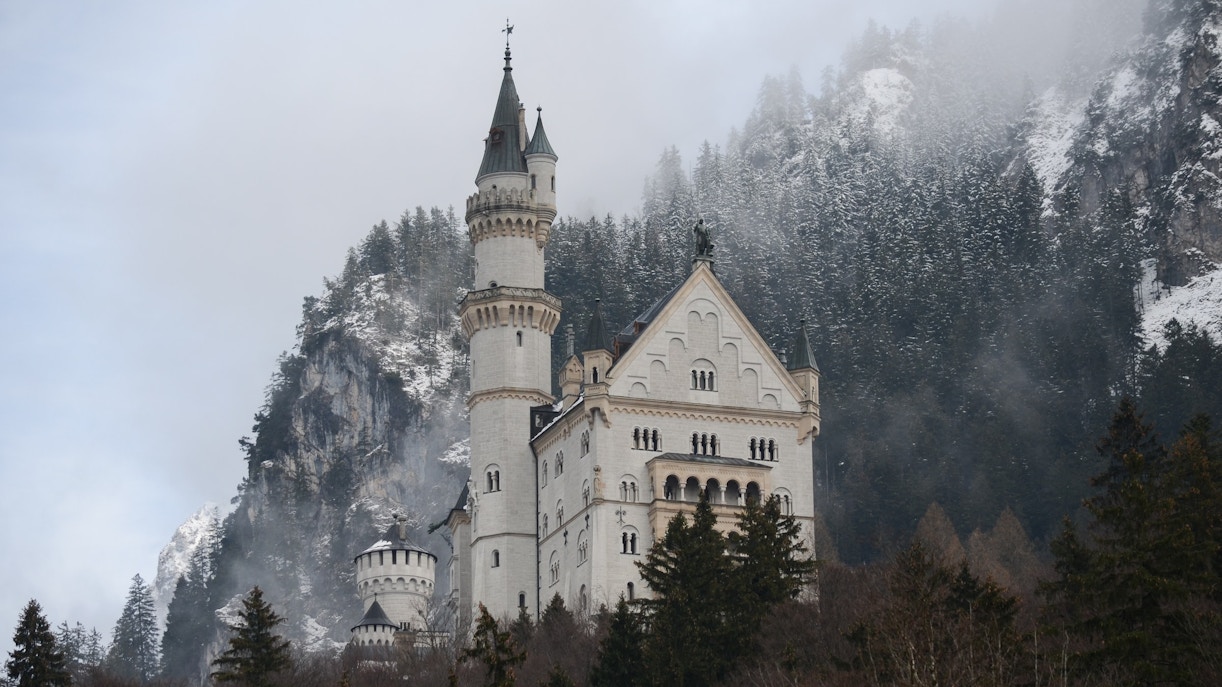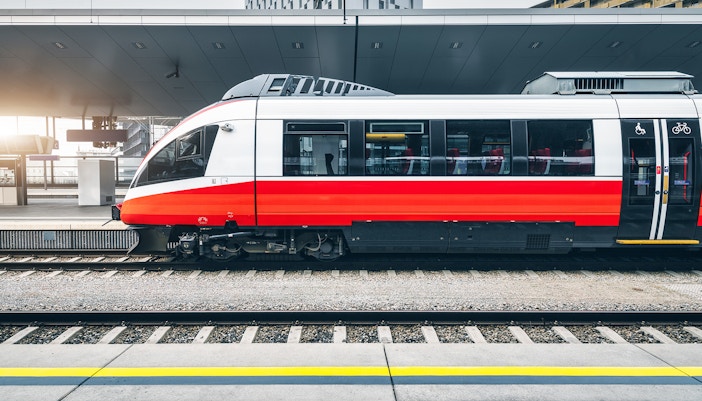The Throne room of Neuschwanstein Castle was inspired by the Byzantine era. Stretching across the 3rd and 4th floors of the palace, this opulent hall is known for its vaulted ceilings and ceremonial chandeliers. Due to his untimely death, King Ludwig II never ruled from this throne.

